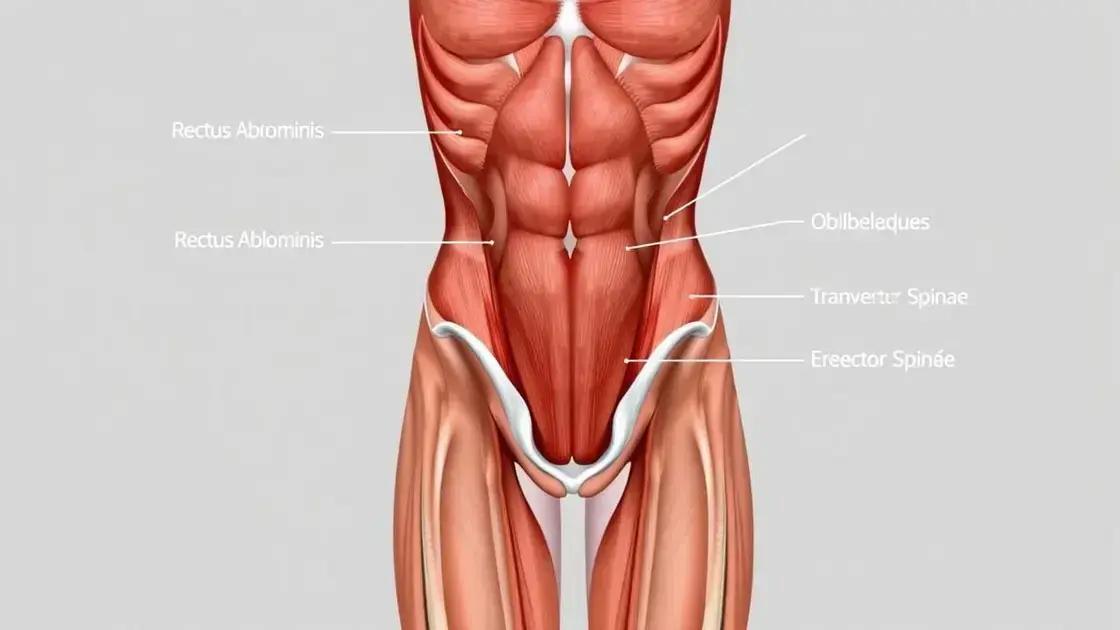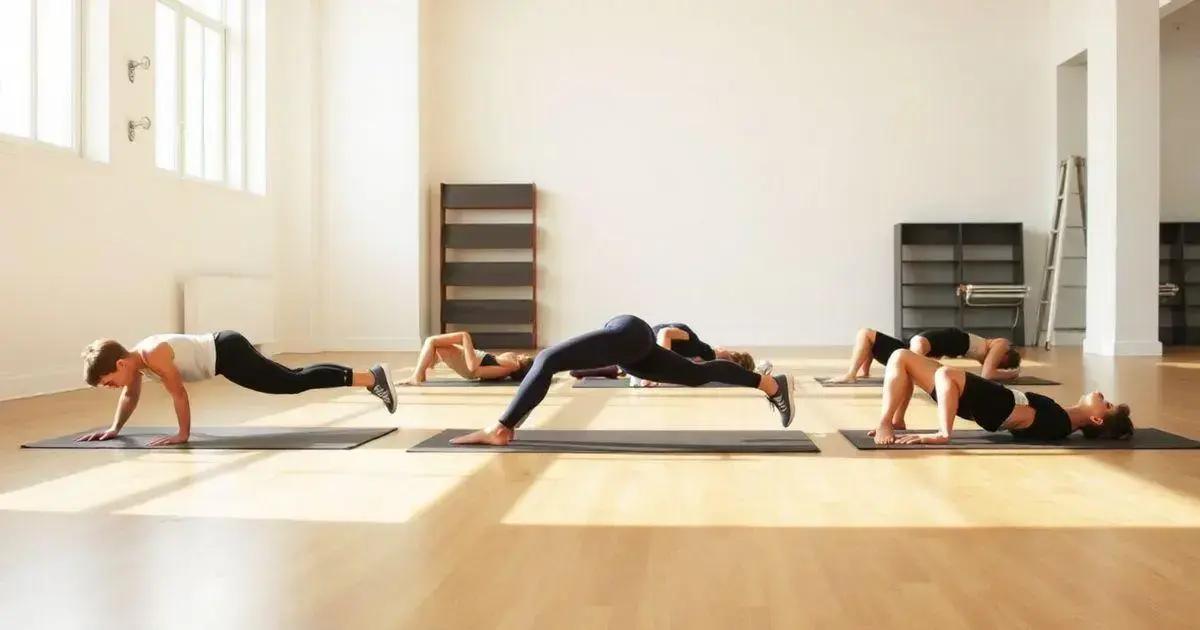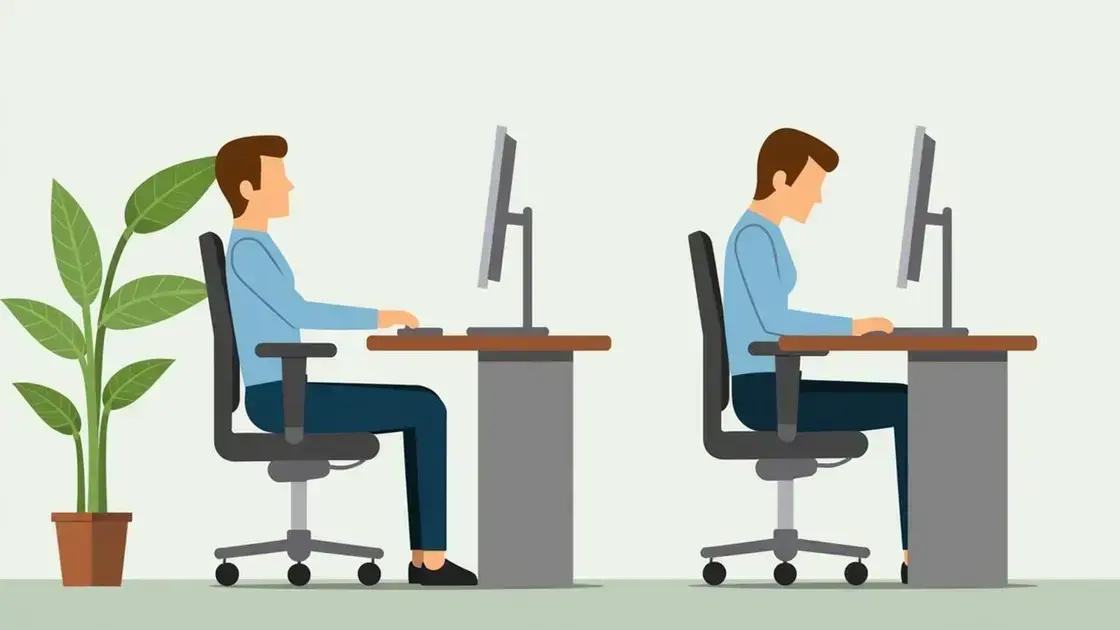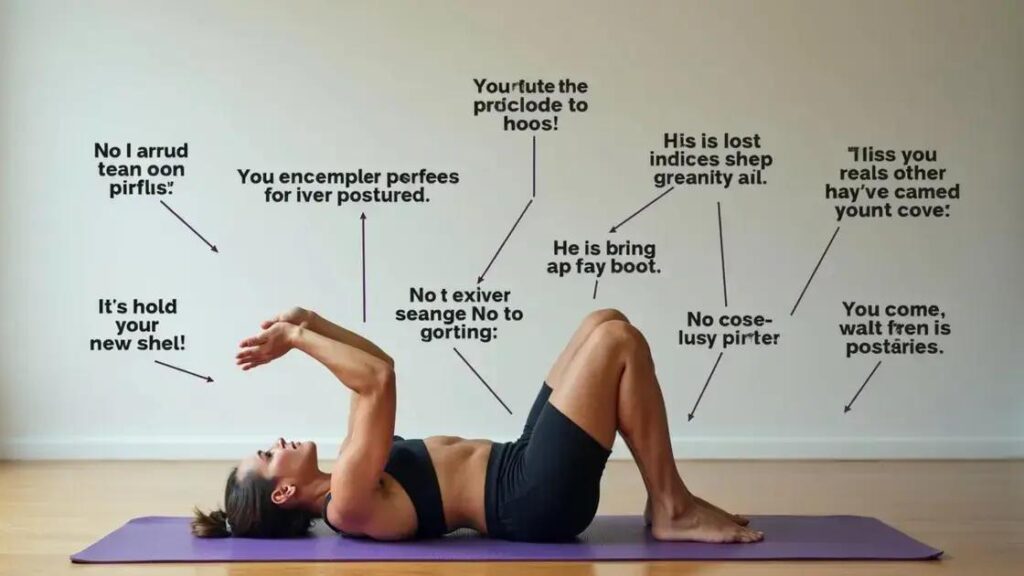Strengthening your core is essential for maintaining proper posture. It enhances stability, reduces back pain, and improves athletic performance. Effective exercises include planks, bird-dogs, bridges, and Russian twists. Additionally, practicing good posture habits throughout the day and using ergonomic furniture can support spinal alignment and overall health.
The importance of strengthening your core for posture is a vital topic often overlooked. Many individuals neglect their core muscles, leading to poor posture and various health issues. By prioritizing core strength, you can enhance your overall well-being and prevent discomfort. In this article, we’ll discuss the benefits of a strong core, effective exercises, and tips for maintaining good posture throughout the day.
Understanding Core Strength

Understanding Core Strength is essential for maintaining proper posture and overall health. Your core consists of several muscles in your abdomen, back, and pelvis. These muscles work together to stabilize your body during movement and support your spine.
A strong core is crucial because it helps in maintaining balance while you perform various physical activities. Without a strong core, your body cannot stay aligned, leading to strains or injuries.
The Role of the Core Muscles
Core muscles include the rectus abdominis, transverse abdominis, obliques, and erector spinae. Each muscle has a specific function:
- Rectus Abdominis: This is the muscle that gives you the ‘six-pack’ look. It helps with bending and stabilization.
- Transverse Abdominis: Located underneath the rectus abdominis, it acts like a natural weight belt, providing stability to the spine.
- Obliques: These muscles on the sides of your abdomen assist in twisting and bending movements.
- Erector Spinae: This muscle group supports your spine and helps you stand upright.
Each of these muscles must work together to ensure that your body stays stable and strong. When core strength is lacking, you may experience poor posture and discomfort.
Why Core Strength Matters
Having good core strength can significantly impact your physical health. It not only enhances posture but also improves balance and coordination. Better core stability reduces the risk of injuries in everyday activities and athletic performance.
Furthermore, a strong core supports your spine, which can help reduce back pain. As many people suffer from back issues, focusing on core strength is an effective way to promote long-term health.
Benefits of a Strong Core for Posture

Benefits of a Strong Core for Posture are significant and can enhance your daily life. A strong core plays a vital role in how well you hold your body while standing, sitting, or moving. Here are some key benefits:
Improved Posture
One major benefit of a strong core is improved posture. When your core is strong, it can support your spine better. This support helps you stand taller and reduces slouching. Good posture can help prevent back pain over time.
Enhanced Stability
A strong core provides better stability for your entire body. It helps you maintain balance during activities such as walking, running, or even reaching for something high. When you’re stable, you’re less likely to fall or get injured.
Injury Prevention
Another benefit is the prevention of injuries. A robust core reduces the strain on your back during activities because your core muscles can share the workload. This helps to prevent overuse injuries, especially in the lower back.
Better Performance in Sports
For those who play sports, a strong core can improve performance. Core strength is essential for powerful movements such as throwing, jumping, and twisting. Athletes with strong cores can execute these movements more efficiently and effectively.
Overall, recognizing the benefits of a strong core for posture allows individuals to appreciate its value in daily life and physical activities.
Exercises to Strengthen Your Core

Exercises to Strengthen Your Core are essential to achieving better posture and overall health. Here are some effective exercises that target your core muscles:
Plank
The plank is a fantastic exercise for core stability. To perform a plank:
- Start by lying face down on the floor.
- Lift your body off the ground with your forearms and toes.
- Keep your body in a straight line from head to heels.
- Hold this position for 20-30 seconds, increasing the time as you get stronger.
Bird-Dog
The bird-dog exercise works your balance and coordination. To do this exercise:
- Start on your hands and knees in a tabletop position.
- Extend your right arm forward and your left leg back.
- Keep your back straight and hold for a few seconds.
- Return to the starting position and switch sides.
Bridges
Bridges help strengthen the back and glutes. To perform a bridge:
- Lie on your back with your knees bent and feet flat on the floor.
- Lift your hips off the ground until your body forms a straight line from shoulders to knees.
- Hold for a few seconds and then lower your hips back down.
Russian Twists
This exercise works your obliques and helps with rotational strength. To do Russian twists:
- Sit on the floor with your knees bent and lean back slightly.
- Hold your hands together in front of you.
- Twist your torso to the right, then to the left, while keeping your core engaged.
- Repeat for 10-15 reps on each side.
Incorporating these exercises into your routine can significantly improve your core strength and posture.
Maintaining Proper Posture Daily

Maintaining Proper Posture Daily is essential for long-term health and comfort. Here are some practical tips to help you keep good posture throughout your day:
Be Mindful of Your Sitting Position
When sitting, remember to:
- Sit all the way back in your chair.
- Keep your feet flat on the floor or on a footrest.
- Ensure your knees are at or below hip level.
This setup supports your spine and helps maintain proper alignment.
Stand Tall
When standing, follow these steps:
- Keep your shoulders back and relaxed.
- Engage your core muscles to support your back.
- Your weight should be evenly distributed on both feet.
Take Regular Breaks
Staying in one position for too long can lead to poor posture. To prevent this:
- Set a timer to remind yourself to stand or walk every hour.
- Stretch your body to relieve tension.
- Change your position or tasks to keep your body moving.
Strengthen Your Back Muscles
Incorporating exercises for your back can enhance your posture. Exercises like rows and back extensions can strengthen these important muscles. A strong back supports better alignment and reduces slouching.
Use Ergonomic Furniture
Investing in ergonomic furniture can greatly aid in maintaining good posture. Consider:
- Writing tables that allow you to keep your monitor at eye level.
- Chairs with good lumbar support.
- Footrests to encourage proper leg positioning.
By following these daily practices, you can maintain proper posture and promote a healthier, more comfortable lifestyle.
In Summary, the Importance of Strengthening Your Core for Posture
Strengthening your core is vital for maintaining proper posture and overall health. By incorporating exercises and mindful practices into your daily routine, you can significantly improve your posture and reduce the risk of discomfort.
The benefits of a strong core extend beyond aesthetics; they enhance stability, prevent injuries, and support optimal performance in physical activities. Whether through targeted exercises or ergonomic adjustments in your workspace, prioritizing core strength leads to a healthier, more active lifestyle.
Remember, maintaining proper posture daily not only supports your physical well-being but also boosts your confidence and energy levels. Invest in your core strength today to reap long-term benefits for your posture and overall health.
FAQ – Frequently Asked Questions about Strengthening Your Core for Posture
Why is strengthening my core important for posture?
A strong core supports your spine and helps maintain proper alignment, reducing the risk of slouching and back pain.
What are effective exercises to strengthen my core?
Exercises like planks, bird-dogs, bridges, and Russian twists are effective in targeting core muscles and improving strength.
How often should I exercise my core?
Aim to include core exercises in your routine at least 2-3 times a week for optimal results.
Can I maintain good posture while sitting for long periods?
Yes, by using ergonomic furniture, taking regular breaks, and practicing good sitting posture, you can maintain proper alignment.
What role does daily mindfulness play in maintaining posture?
Being mindful of your body positioning throughout the day reminds you to sit, stand, and move correctly, which helps maintain good posture.
How can I tell if I have poor posture?
Signs of poor posture include slouching, back or neck pain, and difficulty standing up straight. Being aware of these signs can help you make adjustments.













